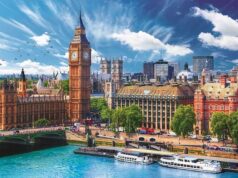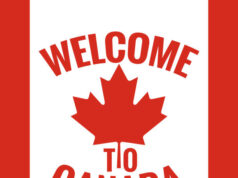Applying for a US tourist visa can be extremely stressful. Guidelines often need to be clearer, and contradicting information on different websites can make the whole process even more confusing.
If you’re planning a temporary stay in the US and want to apply for a B-1/B-2 travel visa, you may be wondering what documents are required, which destinations you can visit, and what you’ll need to start gathering for your application.
As such, we’ve gathered some helpful information about the US tourist visa application process, including a list of all the documents you will need to complete the online application and take with you to your visa interview.
However, you must first verify that a visitor visa is indeed the required visa for your travel to the United States.
Do You Need to Apply for a US tourist Visa?
According to the US Department of State, tourist visas are nonimmigrant visas for those wanting to enter the United States temporarily for business (B1 visa), tourism (B2 visa), or a combination of both (B1/B2).
The business visitor visa (B1) permits travel for the following purposes: consulting with business associates, attending a professional conference, settling an estate, or negotiating a contract.
Meanwhile, the visitor visa (B2) permits travel for tourism, vacationing, visiting friends or relatives, receiving medical treatment, participating in social events, participating in amateur performances, and enrolling in short, non-credited courses of study.
Requirements of the US Tourist Visa
To obtain a tourist visa for the United States, you will need to fulfill certain requirements. Here are the key criteria:
- Valid passport: Your passport should be valid for at least six months beyond your planned stay in the United States.
- Nonimmigrant intent: You must demonstrate that you have no intention of immigrating to the US and that you plan to return to your home country after your visit.
- Adequate funds: You should provide evidence that you have enough finances to cover your travel expenses in the US, such as bank statements or sponsorship letters.
- Health and character: You may be required to undergo a medical examination, depending on the length of your stay and your country of residence. Additionally, you must prove that you have good moral character and do not pose a security risk.
Meeting these requirements does not guarantee the approval of your visa application. Remember to provide all necessary documentation and present a strong case to the consular officer during your interview.
What is the Application Process for a US Tourist Visa?
Applying for a tourist visa to the US involves several steps. Here is an overview of the process:
Complete the DS-160 form: The first step is to fill out the DS-160 form, which is the online application for a nonimmigrant visa. Ensure you provide accurate and up-to-date information.
Schedule an interview: After submitting the DS-160 form, you must schedule an interview at the nearest US embassy or consulate. Visa interview appointments are generally in high demand, so it is recommended that you schedule well in advance.
Prepare supporting documents: Gather the necessary documents to support your visa application. These may include a valid passport, proof of financial capability, travel itinerary, and invitation letters, if applicable.
Attend the visa interview: On the day of your interview, arrive at the embassy or consulate on time and be prepared to answer questions about your travel plans, ties to your home country, and other relevant details. In addition, dress appropriately, be polite, and be respectful.
Pay the visa fee: You must pay the visa application fee before or on the day of your interview. The fee amount may vary depending on the type of visa and your nationality.
Wait for visa processing: After the interview, the consular officer will determine whether you are eligible for a visitor visa. If approved, your passport will be returned to you with the visa stamped. Processing times can vary, so it is advisable to apply well in advance of your travel date.
Destinations You Can Visit With a US Tourist Visa
A valid US tourist visa opens up a world of travel opportunities for foreigners. Several countries across different continents allow visa-free entry or visa-on-arrival for individuals with valid US visas.
Below is an overview of these destinations: Mexico, Panama, Costa Rica, Bermuda, Turkey, Dominican Republic, Puerto Rico, Cuba, and Belize. While a US visa streamlines travel to many countries, some may have additional entry requirements.
Be sure to research any necessary vaccinations, health insurance, or documentation needed before departure. Visa policies are constantly changing.
Cultural Insights of the US Tourist Visa
The United States offers a plethora of attractions and destinations that cater to various interests and preferences. Whether you are a nature enthusiast, history buff, or culture lover, the US has something for everyone.
Cultural Hotspots in the United States
- New York City: Experience the vibrant energy of the Big Apple with its world-class museums, Broadway shows, and diverse neighborhoods.
- New Orleans: Immerse yourself in the rich cultural heritage of this lively city, known for its jazz music, delicious cuisine, and colorful festivals like Mardi Gras.
- San Francisco: Explore the cultural melting pot of San Francisco, with its iconic landmarks like the Golden Gate Bridge, diverse neighborhoods, and thriving arts scene.
Benefits of Obtaining a US Tourist Visa
The US visitor visa offers several benefits, allowing for a wide range of activities and opportunities.
- Tourism and Travel: Explore the diverse landscapes and cultural attractions across the entire United States for up to six months per visit, with multiple entries over a decade.
- Business Purposes: A B1 visa, specifically designed for temporary business activities, allows you to attend meetings, conferences, trade shows, or seminars in the US.
- Education: An F-1 student visa allows you to pursue studies in high-standard universities in the US, while F-2 visas are for dependent spouses or unmarried children under 21.
- Employment: The H-1B visa is highly sought after and subject to a random lottery system due to the high demand for work in specialized fields in the US.
- Medical Treatments: A B-2 visa allows you to obtain specialized medical treatments. It requires detailed medical diagnoses and endorsement from a US physician.
- Cultural Exchange: Participants in cultural exchange programs are granted a Q-1 visa, valid for up to 15 months, and receive stipends for expenses from sponsors.
- Visiting Friends and Family: B1/B2 visas enable visits to friends and family in the US. They are valid for up to 10 years and allow stays of up to 6 months per visit.
- Visa-Free Travel: A US tourist visa can also grant visa-free travel to various countries, including Mexico, Belize, Panama, the Caribbean Islands, South American nations, European countries, and select Asian destinations.
Overall, a US visa provides access to a wide range of opportunities and experiences, making it invaluable for individuals who intend to visit the United States.
Final Thoughts
Preparing for a trip to the United States involves understanding the visa requirements, gathering the necessary documentation, and familiarizing yourself with important travel tips. By following the guidelines provided in this article, you can ensure a smooth and enjoyable journey as an international visitor to the United States.






